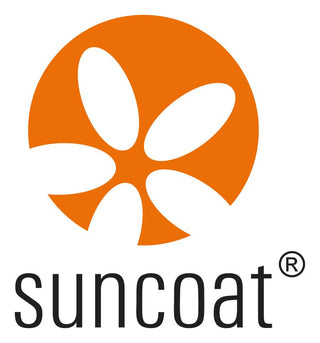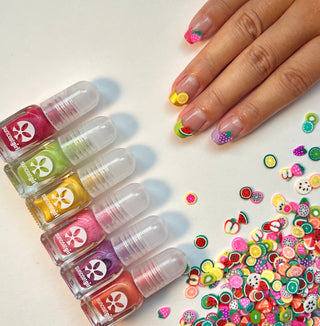By: Meagan Hobson, Ying Chun Liu, Mimi Sun
Ancient Nail Polish
In ancient China, nail polish served as a powerful symbol of distinction among various ranks and social classes. The ingredients used were simple yet effective, including beeswax, Arabic gum, and egg whites. These early formulations laid the foundation for the cultural significance of nail adornment (1).
Beyond China in the ninth century, the practice of nail enhancement continued in different regions. In parts of South Asia and the Arabian Peninsula, nails were dyed using Henna, showcasing a unique cultural aesthetic. Meanwhile, Korean, and Chinese traditions embraced the use of red wine and crushed balsam flowers for tinting nails, further diversifying nail aesthetics across the globe. (2)
1916: Clear Liquid Nail Polish Emerges:
The early 20th century around 1916, marked a turning point with the introduction of clear, colorless liquid nail polish (12). This subtle yet transformative liquid product laid the groundwork for the colorful revolution that led to modern nail polish in the subsequent decades (2).
Clear nail polish was subsequently colored with soluble dyes to produce colors however with limited color intensity.
1928: Acetone nail polish remover was first introduced to the market, this invention dramatically helped the mass adoption of nail polish that happened over the next decades (2, 13).
The 1930s: Opaque Nail Polish Takes Center Stage:
Following the invention of clear liquid nail polish, the 20th century witnessed the development of the first opaque nail polish around the 1930s made from nitrocellulose. To achieve color intensity, titanium dioxide and iron oxides etc pigments were introduced into nail polish. (4,12,13,14).
Chemist Charles Lachman pioneered the development of the inaugural opaque-colored nail polishes that led to the establishment of Revlon. Their partnership was centred around the creation and launch of this ground-breaking nail polish product (12,14). This breakthrough allowed individuals to experiment with a spectrum of colours, expanding the possibilities for self-expression through nail art. (3,13)
Nitrocellulose however can impart visual quality issues of nail polish due to its poor UV stability. This causes severe discoloration, ie yellowing in nail care products and is especially problematic in clear nail coats.
Nitrocellulose alternatives were subsequently developed to improve nail polish ‘s UV stability, such as cellulose acetate butyrate etc.
In the early 1970s, the development of acrylate copolymers further advanced nail polish performance, largely eliminating the nail polish discoloration problem. Acrylate and methacrylate polymers are known for their superior UV stability. They are now commonly found in modern nail polish, particularly in clear nail polish.
1980s, Gel Nail Polish:
Gel Nail Polish was introduced in the 1980s, offering durability and a glossy finish originating from a desire for longer-lasting manicures. Its huge popularity today is largely due to its ability to resist chipping and maintain appearance for an extended period of time.
Gel nail polish is made from reactive monomers, oligermers of methyl methacrylate, acrylates, polyurethane-acrylate and colorants plus small amounts of chemical solvents. Gel nail polish is cured under UV light when these chemical monomers and oligermers are reacting with each other to form a highly crosslinked, super durable manicure finish.
During the early days of gel nail polish introduction, due to technical challenges and limited education on gel nail application, gel nail polish faced huge hurdles for commercial success, and many brands withdrew from the marketplace. However in the 1990s, gel nail polish made a comeback in the U.S. with significantly improved formulas designed for precise light exposure and it is offering enhanced clarity and durability (6. Roy, 2011).
2000s, Environmental Impact of Nail Polish
The clean-beauty movement around the end of 20th century and early 21st century, has brands increasingly eliminating harmful ingredients from nail polish, especially the Big-Three toxins: formaldehyde, phthalate based plasticizers and toluene, so to prioritise the well-being and health of consumers (14).
The removal of these Big-Three nail polish formulations represents a journey towards safer and more conscious practices. It also represents a significant triumph in the beauty industry towards safer and more environmental & health conscious practices.
By the late-2000s, most beauty companies adopted 3-free nail polishes that are free from these Big-Three (7). However, we must say that most of the time, the brands are incorporating other chemicals, mainly synthetic acetates that are still existing in today’s mainstream nail polish brands.
2000s, Water-Based Nail Polish:
In the 2000s Water-Based Nail Polish formulations emerged as a conscious and eco-friendly option. In 2003, Ying Chun Liu founded Suncoat Products in Canada, one of the first Water-based and non-toxic nail polish companies. The concept of water-based nail polish gained traction as a healthier alternative to traditional formulations. The chemical solvents (toluene and acetates etc) in a conventional nail polish bottle are fully replaced by water, truly a revolutionary step toward clean, non toxic nail polish.
Today, there are multiple water based nail polish brands on the market that offer vibrant colours but limited durability.
Challenges water-based nail polish brands are facing today : longevity or durability:
Click here to read more
What are water-based nail polishes made from?
- acrylate copolymers aqueous emulsions
- styrene acrylate copolymers aqueous emulsion
- polyurethane polymers, polyurethane acrylate hybrid aqueous dispersions.
These polymers don’t have the same adhesion properties that nitrocellulose offers. Nitrocellulose is excellent for its adhesion to nails, but it only works in regular nail polish with chemicals. There's no water-based nitrocellulose for water-based nail polish yet.
The significance of introducing nitrocellulose in nail polish formulation:
Click here to read more
In 1845, Swiss-German chemist Christian Friedrich Schönbein accidentally discovered cellulose nitrate when he used his wife's cotton apron to clean up spilled nitric acid in his lab. The reaction between cotton and nitric acid resulted in a new compound that explosively released black smoke when heated (17. Encyclopedia,2023)
Nitrocellulose, when properly formulated, has excellent adhesion properties to the natural nail. It is soluble in many volatile chemical solvents such as toluene, butyl acetate, ethyl acetate. Liquid nail polish made from nitrocellulose is fast drying, easy to apply and durable. This makes it an indispensable ingredient in nail polish even in today’s modern nail polish formulations.
Conclusion:
The history of nail polish is a vivid journey spanning centuries, from ancient Chinese symbolism to the bustling nail salons of the present-day world and the globe. Innovations like nitrocellulose in the 20th century and the surge of gel polish in the 1980s, and the invention of water-based clean nail polish around early 2000s have left indelible marks on the nail industry.
While timeless red nails, French Manicure remain an emblem of sophistication, contemporary trends like water-based formulations reflect a commitment to healthier alternatives. As we embrace a diverse spectrum of colours, the industry's continuous evolution underscores a collective commitment to creativity, safety, and sustainability.
References:

